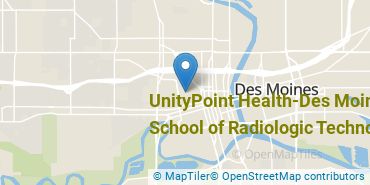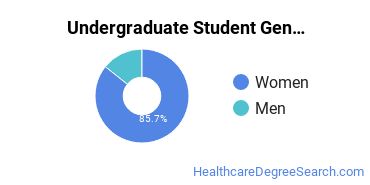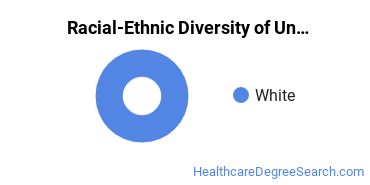UnityPoint Health-Des Moines School of Radiologic Technology Healthcare Programs
UnityPoint Health-Des Moines School of Radiologic Technology is a private not-for-profit institution located in Des Moines, Iowa. The location of UnityPoint Health-Des Moines School of Radiologic Technology is great for students who prefer living in an urban area.
Featured schools near , edit
Where Is UnityPoint Health-Des Moines School of Radiologic Technology?

Contact details for UnityPoint Health-Des Moines School of Radiologic Technology are given below.
| Contact Details | |
|---|---|
| Address: | 1200 Pleasant St, Des Moines, IA 50309-1453 |
| Phone: | 515-241-6880 |
| Website: | www.unitypoint.org |
How Do I Get Into UnityPoint Health-Des Moines School of Radiologic Technology?
You can apply to UnityPoint Health-Des Moines School of Radiologic Technology online at: https://www.unitypoint.org/join-our-team/medical-education-and-career-growth/school-of-radiologic-technology---des-moines-area-hospitals
Can I Afford UnityPoint Health-Des Moines School of Radiologic Technology?
UnityPoint Health-Des Moines School of Radiologic Technology Undergraduate Student Diversity
Gender Diversity
Of the 15 full-time undergraduates at UnityPoint Health-Des Moines School of Radiologic Technology, 13% are male and 87% are female.

Racial-Ethnic Diversity
The racial-ethnic breakdown of UnityPoint Health-Des Moines School of Radiologic Technology students is as follows.

| Race/Ethnicity | Number of Grads |
|---|---|
| Asian | 0 |
| Black or African American | 0 |
| Hispanic or Latino | 0 |
| White | 15 |
| International Students | 0 |
| Other Races/Ethnicities | 0 |
UnityPoint Health-Des Moines School of Radiologic Technology Healthcare Concentrations
The table below shows the number of awards for each concentration.
| Major | Undergraduate Certificate | TOTAL |
|---|---|---|
| Radiologic Technology | 9 | 9 |
| TOTAL | 9 | 9 |
References
*The racial-ethnic minorities count is calculated by taking the total number of students and subtracting white students, international students, and students whose race/ethnicity was unknown. This number is then divided by the total number of students at the school to obtain the racial-ethnic minorities percentage.
More about our data sources and methodologies.
